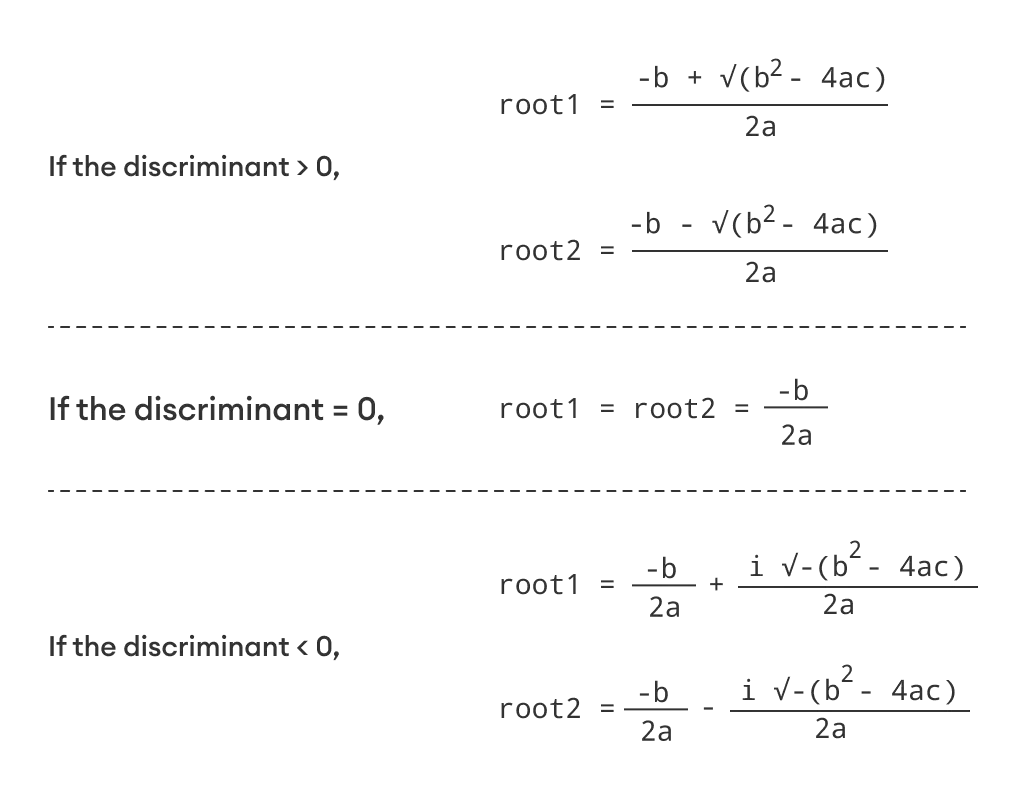The standard form of a quadratic equation is:
ax2 + bx + c = 0, where a, b and c are real numbers and a != 0
The term b2; - 4ac is known as the discriminant of a quadratic equation. It tells the nature of the roots.
- If the discriminant is greater than
0, the roots are real and different. - If the discriminant is equal to
0, the roots are real and equal. - If the discriminant is less than
0, the roots are complex and different.

Program to Find Roots of a Quadratic Equation
#include <math.h>
#include <stdio.h>
int main() {
double a, b, c, discriminant, root1, root2, realPart, imagPart;
printf("Enter coefficients a, b and c: ");
scanf("%lf %lf %lf", &a, &b, &c);
discriminant = b * b - 4 * a * c;
// condition for real and different roots
if (discriminant > 0) {
root1 = (-b + sqrt(discriminant)) / (2 * a);
root2 = (-b - sqrt(discriminant)) / (2 * a);
printf("root1 = %.2lf and root2 = %.2lf", root1, root2);
}
// condition for real and equal roots
else if (discriminant == 0) {
root1 = root2 = -b / (2 * a);
printf("root1 = root2 = %.2lf;", root1);
}
// if roots are not real
else {
realPart = -b / (2 * a);
imagPart = sqrt(-discriminant) / (2 * a);
printf("root1 = %.2lf+%.2lfi and root2 = %.2f-%.2fi", realPart, imagPart, realPart, imagPart);
}
return 0;
}
Output
Enter coefficients a, b and c: 2.3 4 5.6 root1 = -0.87+1.30i and root2 = -0.87-1.30i
In this program, the sqrt() library function is used to find the square root of a number. To learn more, visit: sqrt() function.